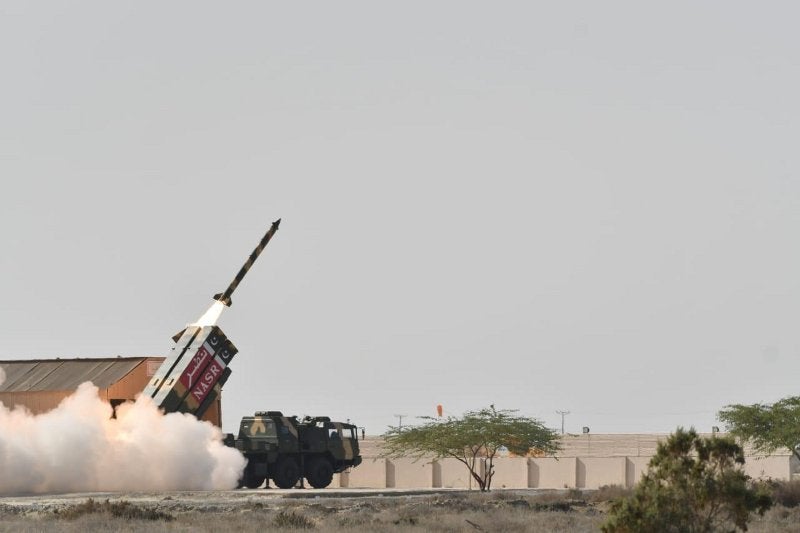
The Pakistan Army Strategic Forces Command (ASFC) has conducted the training launch of the short-range, surface-to-surface missile Nasr.
Testing involved the launch of ‘quad salvo for desired effects’ and saw the missile validate all the expected technical parameters.
During the launch, four missiles were fired from a salvo-mode vehicle-mounted, four-tube missile launcher.
The training exercise was conducted as part of efforts aimed at improving the operational efficiency of the country’s ASFC.
Joint chief of staff committee chairman general Zubair Mahmood Hayat said the missile ‘enhances Pakistan’s deterrence capability’ and ‘appreciated the standard of training and operational preparedness of Army Strategic Forces Command’.
The location of the training launch has not been disclosed by the Pakistan military’s public relations wing, Inter-Service Public Relations (ISPR).
A statement published by ISPR said: “Nasr is a high precision, shoot and scoot weapon system with the ability of in-flight manoeuvrability. This weapon system has augmented full spectrum deterrence posture remaining within the precincts of policy of credible minimum deterrence, against prevailing and evolving threat spectrum more effectively, including enemy’s ballistic missile defence and other air defence systems.”
Also known as Hatf-9, Nasr has a range of 60km and is believed to be capable of carrying nuclear and conventional warheads.
The 6m-long, single-stage solid propellant weapon system was first tested in 2011 and the latest launch follows a test firing carried out in July 2017.



